It pleases me when the six films I write about in these Moving picture posts are from six different countries. I mean, I make an effort to watch movies from nations other than the US and UK, but I don’t plan my viewing so meticulously that I hit six countries every six films. And it’s an odd bunch of films too. Half by directors I’ve seen films by before, and half that I knew nothing about when I slid the disc into the player…
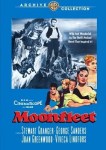 Moonfleet, Fritz Lang (1955, USA). I’m pretty sure I read J Meade Falkner’s Moonfleet when I was a kid, so sure, in fact, I always get it confused with every book written by Wilkie Collins, even though the only Collins book which comes close, and that’s only in the title, is The Moonstone, which has nothing to do with Cornwall or smugglers and isn’t even set in the 1700s. Um, I see Wikipedia says of Moonfleet, “The book was extremely popular among children worldwide up until the 1970s”, which probably explains why I read it (I was a child in the 1970s). But this was Lang’s adaptation of the novel, a film that star Stewart Granger described as “a bloody awful film”, and it certainly isn’t a children’s film but more of a Hollywood swashbuckler. Sad to say, it’s easy to see why this film and Clash by Night (see here) aren’t actually readily available on DVD, despite being made by a director of Lang’s stature. A young boy is sent to Cornwall by his late mother into the care of an old flame. Unfortunately, said old flame, the local squire, is the head of the local smuggling ring. And the local magistrate is out to get him. The rest, despite the English source text, despite the German director, despite the mostly British cast (although it was shot on the MGM backlot)… is pure Hollywood historical. It has its moments, but Moonfleet is a Sunday afternooon film, and quickly forgotten.
Moonfleet, Fritz Lang (1955, USA). I’m pretty sure I read J Meade Falkner’s Moonfleet when I was a kid, so sure, in fact, I always get it confused with every book written by Wilkie Collins, even though the only Collins book which comes close, and that’s only in the title, is The Moonstone, which has nothing to do with Cornwall or smugglers and isn’t even set in the 1700s. Um, I see Wikipedia says of Moonfleet, “The book was extremely popular among children worldwide up until the 1970s”, which probably explains why I read it (I was a child in the 1970s). But this was Lang’s adaptation of the novel, a film that star Stewart Granger described as “a bloody awful film”, and it certainly isn’t a children’s film but more of a Hollywood swashbuckler. Sad to say, it’s easy to see why this film and Clash by Night (see here) aren’t actually readily available on DVD, despite being made by a director of Lang’s stature. A young boy is sent to Cornwall by his late mother into the care of an old flame. Unfortunately, said old flame, the local squire, is the head of the local smuggling ring. And the local magistrate is out to get him. The rest, despite the English source text, despite the German director, despite the mostly British cast (although it was shot on the MGM backlot)… is pure Hollywood historical. It has its moments, but Moonfleet is a Sunday afternooon film, and quickly forgotten.
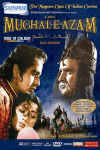 Mughal-e-Azam, K Asif (1960, India). The cover art claims this film is in colour, but it was the only decent cover art for the film I could find. In actual fact, when released in 1960, Mughal-e-Azam was black and white. But in 2009, an extensive, and expensive, digital colourisation of the entire film was done. However, the edition I saw – a rental – was black and white, but for a ten-minute colour section in the middle, and another ten-minute colour section at the end. And, to be honest, given the sets and costumes and the abundant use of jewels and bright colours, I suspect 197 minutes of colourised Mughal-e-Azam would have burnt out my eyes. The film is considered a classic of Bollywood cinema, and it’s easy to see why. It’s set in the late sixteenth century. Emperor Akbar is desperate for a male heir, and walks barefoot to a shrine to pray for a son. Which he soon has. The son grows up to be spoilt and cruel, so Akbar sends him away to become a man. Fourteen years later, Prince Salim returns as a victorious soldier. Meanwhile, Akbar has got himself a new slave girl dancer, Nadira. Salim falls in love with her, and asks his father for her hand in marriage, but Akbar refuses. So Salim rebels, raises an army, there’s a big battle and Salim loses. He is sentenced to death, but if Nadira gives herself up, he’ll be spared. So she does and is entombed alive. But way back at the start of the film Nadira’s mother was granted a boon by Akbar, and she uses it now to save her daughter’s life – but the two must leave the country and spend the rest of their days in exile. This is a proper epic movie – the plot, the characters, the sets, the costumes, the cast of thousands (or at least what seems like one)… As a black and white film, it’s pretty good, but on reflection, despite my earlier comment, I think I probably would like to watch the colourised version. Mughal-e-Azam is a different type of film to Pakeezah, same basic Bollywood plot, of course, but more historical drama than romantic drama, and, despite also being filmed chiefly on massive sets, it doesn’t have that same slightly theatrical look of the other film (which was, to be fair, one of the chief attractions of Pakeezah). I’ve watched around two dozen Bollywood films by now, I think, and while I’ve enjoyed most of them, it’s the historical ones I’ve been tempted to buy my own copies – the Guru Dutt movies, for example, Pakeezah, and now perhaps Mughal-e-Azam…
Mughal-e-Azam, K Asif (1960, India). The cover art claims this film is in colour, but it was the only decent cover art for the film I could find. In actual fact, when released in 1960, Mughal-e-Azam was black and white. But in 2009, an extensive, and expensive, digital colourisation of the entire film was done. However, the edition I saw – a rental – was black and white, but for a ten-minute colour section in the middle, and another ten-minute colour section at the end. And, to be honest, given the sets and costumes and the abundant use of jewels and bright colours, I suspect 197 minutes of colourised Mughal-e-Azam would have burnt out my eyes. The film is considered a classic of Bollywood cinema, and it’s easy to see why. It’s set in the late sixteenth century. Emperor Akbar is desperate for a male heir, and walks barefoot to a shrine to pray for a son. Which he soon has. The son grows up to be spoilt and cruel, so Akbar sends him away to become a man. Fourteen years later, Prince Salim returns as a victorious soldier. Meanwhile, Akbar has got himself a new slave girl dancer, Nadira. Salim falls in love with her, and asks his father for her hand in marriage, but Akbar refuses. So Salim rebels, raises an army, there’s a big battle and Salim loses. He is sentenced to death, but if Nadira gives herself up, he’ll be spared. So she does and is entombed alive. But way back at the start of the film Nadira’s mother was granted a boon by Akbar, and she uses it now to save her daughter’s life – but the two must leave the country and spend the rest of their days in exile. This is a proper epic movie – the plot, the characters, the sets, the costumes, the cast of thousands (or at least what seems like one)… As a black and white film, it’s pretty good, but on reflection, despite my earlier comment, I think I probably would like to watch the colourised version. Mughal-e-Azam is a different type of film to Pakeezah, same basic Bollywood plot, of course, but more historical drama than romantic drama, and, despite also being filmed chiefly on massive sets, it doesn’t have that same slightly theatrical look of the other film (which was, to be fair, one of the chief attractions of Pakeezah). I’ve watched around two dozen Bollywood films by now, I think, and while I’ve enjoyed most of them, it’s the historical ones I’ve been tempted to buy my own copies – the Guru Dutt movies, for example, Pakeezah, and now perhaps Mughal-e-Azam…
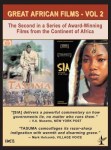 Tasuma, Daniel Sanou Kollo (2004, Burkina Faso). Sogo Sanou is an ex-soldier who fought in Algeria and Indochina for the French, and every month bicycles from his village into the nearest town to collect his military pension. Except it never arrives. Most Burkinabé ex-soldiers, it transpires, left the French army unaware they were eligible for a pension, so someone formed a Burkinabé organisation to apply for those pensions. But Sogo’s application has been delayed because bureaucracy. But he’s convinced that every time he bikes into town, it’ll be waiting for him. So much so, that on one trip he buys a much-needed motorised milling machine for his village from a local trader on credit. But his pension doesn’t arrive, the trader complains to the authorities and tries to re-possess the milling machine. Sogo is so pissed off with all this, he takes the local prefect hostage in his office, and demands he write a letter to General de Gaulle. “But he’s dead!” protests the prefect. “I know that,” says Sogo, “now start writing.” He’s easily taken by the police and thrown into jail. The women of the village then descend on the jail and, thanks to them, and the help of a friendly army lieutenant, Sogo is released. All of which leads to Sogo’s pension being expedited, relations with the trader mended, and there’s a celebration with music and dance at the village for all concerned. I’ve seen the film criticised in a review online as bucolic and a little too slavishly tied to a supposed “African formula”, which seems grossly unfair, if not a bit racist. Tasuma is certainly a product of its setting, and of the concerns which occupy the people in the village and town depicted. But that doesn’t make it formulaic. Anyway, Tasuma is a good film, perhaps not brilliantly directed or acted, but a lot of fun, makes a serious point, and has bags of charm. Worth seeing.
Tasuma, Daniel Sanou Kollo (2004, Burkina Faso). Sogo Sanou is an ex-soldier who fought in Algeria and Indochina for the French, and every month bicycles from his village into the nearest town to collect his military pension. Except it never arrives. Most Burkinabé ex-soldiers, it transpires, left the French army unaware they were eligible for a pension, so someone formed a Burkinabé organisation to apply for those pensions. But Sogo’s application has been delayed because bureaucracy. But he’s convinced that every time he bikes into town, it’ll be waiting for him. So much so, that on one trip he buys a much-needed motorised milling machine for his village from a local trader on credit. But his pension doesn’t arrive, the trader complains to the authorities and tries to re-possess the milling machine. Sogo is so pissed off with all this, he takes the local prefect hostage in his office, and demands he write a letter to General de Gaulle. “But he’s dead!” protests the prefect. “I know that,” says Sogo, “now start writing.” He’s easily taken by the police and thrown into jail. The women of the village then descend on the jail and, thanks to them, and the help of a friendly army lieutenant, Sogo is released. All of which leads to Sogo’s pension being expedited, relations with the trader mended, and there’s a celebration with music and dance at the village for all concerned. I’ve seen the film criticised in a review online as bucolic and a little too slavishly tied to a supposed “African formula”, which seems grossly unfair, if not a bit racist. Tasuma is certainly a product of its setting, and of the concerns which occupy the people in the village and town depicted. But that doesn’t make it formulaic. Anyway, Tasuma is a good film, perhaps not brilliantly directed or acted, but a lot of fun, makes a serious point, and has bags of charm. Worth seeing.
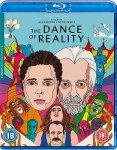 The Dance of Reality, Alejandro Jodorowsky (2013, Chile). Jodorowsky’s last film was 1990’s The Rainbow Thief, which was embarrassingly bad. He then spent two decades trying to interest investors in a sequel to El Topo, and various other projects, but failed. But in 2009, he turned to crowdfunding to finance a film based on his own childhood in northern Chile. That film is The Dance of Reality and… it’s actually pretty damn good. It’s also pretty much a recapitulation of all the ideas and symbolism Jodorowsky has used throughout his career. Jodorowsky’s grandson plays himself – Jodorowsky, that is – at age eleven, the son of a staunch communist and admirer of Stalin, who owns a lingerie shop in the Chilean port of Tocopilla. Convinced Alejandro is not manly enough, the father arranges various tests of his masculinity, which culminates in the boy becoming the mascot of the local fire brigade, accompanying them on a call-out to the local slums, and then breaking down at the funeral of a fire-fighter killed during that fire. In amongst that, you have a variety of life lessons taught to Alejandro by both real and symbolic characters. But it’s not so much the symbolism and imagery, these are things Jodorowsky has used both in his films and his bandes dessinées, and to anyone familiar with his work, they’re clear and obvious and play unambiguous roles in the story. But, more than that, The Dance of Reality actually looks pretty damn good too. The colours are vibrant, the tracking seamless, and the editing unobtrusive. The Dance of Reality is technically expert – and it’s an odd realisation to have while watching it because a) Jodorowsky’s films are better known for being bonkers, b) he hasn’t made a film for two decades, and c) the film is very nepotistic, with Jodorowsky’s three sons playing major roles and his grandson playing the lead. But it’s a good film. It’s a weird film, of course – but you expect that. And though I’ve seen all of Jodorowsky’s feature-length films (er, except the sequel to The Dance of Reality, titled Endless Poetry, which I have on the TBR (see here)), I was surprised at how well made The Dance of Reality proved to be. I’m now looking forward to watching Endless Poetry.
The Dance of Reality, Alejandro Jodorowsky (2013, Chile). Jodorowsky’s last film was 1990’s The Rainbow Thief, which was embarrassingly bad. He then spent two decades trying to interest investors in a sequel to El Topo, and various other projects, but failed. But in 2009, he turned to crowdfunding to finance a film based on his own childhood in northern Chile. That film is The Dance of Reality and… it’s actually pretty damn good. It’s also pretty much a recapitulation of all the ideas and symbolism Jodorowsky has used throughout his career. Jodorowsky’s grandson plays himself – Jodorowsky, that is – at age eleven, the son of a staunch communist and admirer of Stalin, who owns a lingerie shop in the Chilean port of Tocopilla. Convinced Alejandro is not manly enough, the father arranges various tests of his masculinity, which culminates in the boy becoming the mascot of the local fire brigade, accompanying them on a call-out to the local slums, and then breaking down at the funeral of a fire-fighter killed during that fire. In amongst that, you have a variety of life lessons taught to Alejandro by both real and symbolic characters. But it’s not so much the symbolism and imagery, these are things Jodorowsky has used both in his films and his bandes dessinées, and to anyone familiar with his work, they’re clear and obvious and play unambiguous roles in the story. But, more than that, The Dance of Reality actually looks pretty damn good too. The colours are vibrant, the tracking seamless, and the editing unobtrusive. The Dance of Reality is technically expert – and it’s an odd realisation to have while watching it because a) Jodorowsky’s films are better known for being bonkers, b) he hasn’t made a film for two decades, and c) the film is very nepotistic, with Jodorowsky’s three sons playing major roles and his grandson playing the lead. But it’s a good film. It’s a weird film, of course – but you expect that. And though I’ve seen all of Jodorowsky’s feature-length films (er, except the sequel to The Dance of Reality, titled Endless Poetry, which I have on the TBR (see here)), I was surprised at how well made The Dance of Reality proved to be. I’m now looking forward to watching Endless Poetry.
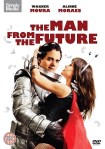 The Man from the Future, Cláudio Torres (2011, Brazil). I’ve no idea where I stunbled across this, but you can’t go wrong with a time-travel movie – even if they do all use the same damn plot – so I bunged it on my rental list. It was kinda fun, without ringing any fresh changes on the genre. I enjoyed it, but if you want to see a time-travel film there are better examples out there. Zero is a genius physicist who teaches at a university, much to his disgust, but is also experimenting on the side with a project to develop a new energy source. He is bitter and twisted, having never recovered, emotionally or mentally, from being humiliated at a university party twenty years before by his girlfriend of the time, Helena, now a world-famous model. It turns out Zero’s invention sends him back in time to the night of his humiliation, which he obviously tries to prevent by telling his past self what’s about to go down. But that changes the future and Zero wakes up in a new – to him – present, in which he is a multi-billionaire, has lost all his friends, and the love of his life, Helena, is in prison for drugs offences. So he has to go back in time again to correct his interference… You can see where this is going. It’s actually quite cleverly done, although the multiple iterations of the same short section of time, the aforementioned university party, do pall a bit. And Zero isn’t a great hero. But there’s a happy ending, so all’s well that ends well, so to speak.
The Man from the Future, Cláudio Torres (2011, Brazil). I’ve no idea where I stunbled across this, but you can’t go wrong with a time-travel movie – even if they do all use the same damn plot – so I bunged it on my rental list. It was kinda fun, without ringing any fresh changes on the genre. I enjoyed it, but if you want to see a time-travel film there are better examples out there. Zero is a genius physicist who teaches at a university, much to his disgust, but is also experimenting on the side with a project to develop a new energy source. He is bitter and twisted, having never recovered, emotionally or mentally, from being humiliated at a university party twenty years before by his girlfriend of the time, Helena, now a world-famous model. It turns out Zero’s invention sends him back in time to the night of his humiliation, which he obviously tries to prevent by telling his past self what’s about to go down. But that changes the future and Zero wakes up in a new – to him – present, in which he is a multi-billionaire, has lost all his friends, and the love of his life, Helena, is in prison for drugs offences. So he has to go back in time again to correct his interference… You can see where this is going. It’s actually quite cleverly done, although the multiple iterations of the same short section of time, the aforementioned university party, do pall a bit. And Zero isn’t a great hero. But there’s a happy ending, so all’s well that ends well, so to speak.
 To Joy, Ingmar Bergman (1950, Sweden). When I put this in the DVD player, I tweeted “am about to watch a Bergman film called To Joy and I think that title is probably a lie”… And within five minutes, the movie’s dialogue went something like “The paraffin stove exploded” and “Your wife died on the way to the infirmary”. So I guess I was right. Not joyful at all. Except, it sort of, well, is. Because the film immediately jumps back in time to when the two leads – the lead violinist and a violinist in an orchestra – first begin seeing each other. They had met at the academy but it’s only when he joins the orchestra that they fall in love and eventually get married. And the film follows their marriage, through its up and downs, and through the career ups and downs of the lead violinist, up to the point where they reconcile after a bad split and she takes the kids off to a holiday cottage with a paraffin stove… The film is set in Helsingborg, and the town features quite heavily, which gives the film less of a stagey aspect than many of Bergman’s films. The same is also true of the scenes where the orchestra rehearses, five minutes of just orchestral music, with no dialogue or narrative impetus. It’s not one of Bergman’s best, but it’s an interesting piece.
To Joy, Ingmar Bergman (1950, Sweden). When I put this in the DVD player, I tweeted “am about to watch a Bergman film called To Joy and I think that title is probably a lie”… And within five minutes, the movie’s dialogue went something like “The paraffin stove exploded” and “Your wife died on the way to the infirmary”. So I guess I was right. Not joyful at all. Except, it sort of, well, is. Because the film immediately jumps back in time to when the two leads – the lead violinist and a violinist in an orchestra – first begin seeing each other. They had met at the academy but it’s only when he joins the orchestra that they fall in love and eventually get married. And the film follows their marriage, through its up and downs, and through the career ups and downs of the lead violinist, up to the point where they reconcile after a bad split and she takes the kids off to a holiday cottage with a paraffin stove… The film is set in Helsingborg, and the town features quite heavily, which gives the film less of a stagey aspect than many of Bergman’s films. The same is also true of the scenes where the orchestra rehearses, five minutes of just orchestral music, with no dialogue or narrative impetus. It’s not one of Bergman’s best, but it’s an interesting piece.
1001 Movies You Must See Before You Die count: 874

Pingback: Moving pictures 2017, #41 | It Doesn't Have To Be Right...
Pingback: Moving pictures 2017, #42 | It Doesn't Have To Be Right...
Pingback: The endurance of the human bladder | It Doesn't Have To Be Right...
Pingback: Summer bounty 2 | It Doesn't Have To Be Right...
Pingback: Moving pictures 2018, #44 | It Doesn't Have To Be Right...
Pingback: Moving pictures 2018, #62 | It Doesn't Have To Be Right...